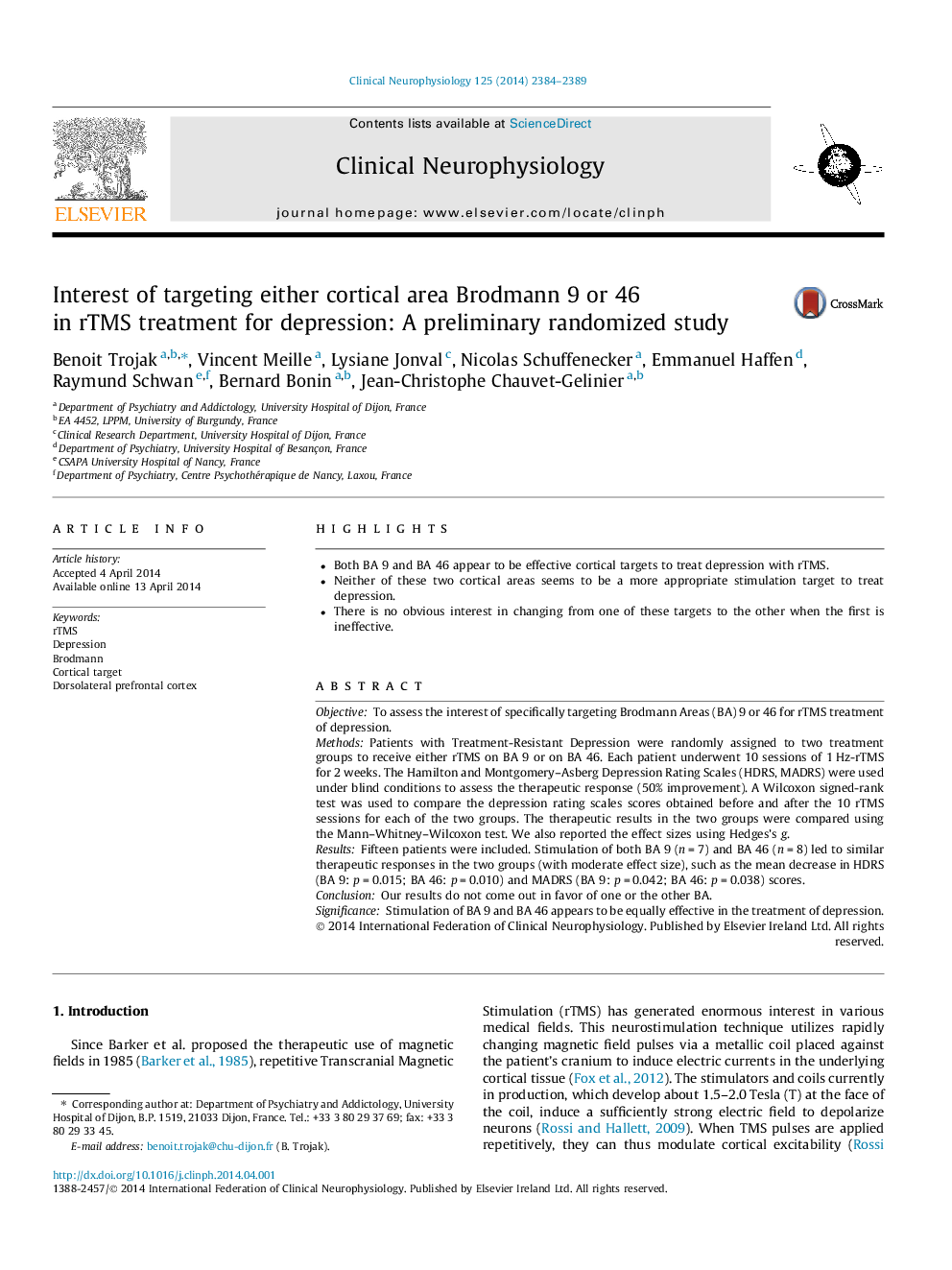| Article ID | Journal | Published Year | Pages | File Type |
|---|---|---|---|---|
| 3043454 | Clinical Neurophysiology | 2014 | 6 Pages |
•Both BA 9 and BA 46 appear to be effective cortical targets to treat depression with rTMS.•Neither of these two cortical areas seems to be a more appropriate stimulation target to treat depression.•There is no obvious interest in changing from one of these targets to the other when the first is ineffective.
ObjectiveTo assess the interest of specifically targeting Brodmann Areas (BA) 9 or 46 for rTMS treatment of depression.MethodsPatients with Treatment-Resistant Depression were randomly assigned to two treatment groups to receive either rTMS on BA 9 or on BA 46. Each patient underwent 10 sessions of 1 Hz-rTMS for 2 weeks. The Hamilton and Montgomery–Asberg Depression Rating Scales (HDRS, MADRS) were used under blind conditions to assess the therapeutic response (50% improvement). A Wilcoxon signed-rank test was used to compare the depression rating scales scores obtained before and after the 10 rTMS sessions for each of the two groups. The therapeutic results in the two groups were compared using the Mann–Whitney–Wilcoxon test. We also reported the effect sizes using Hedges’s g.ResultsFifteen patients were included. Stimulation of both BA 9 (n = 7) and BA 46 (n = 8) led to similar therapeutic responses in the two groups (with moderate effect size), such as the mean decrease in HDRS (BA 9: p = 0.015; BA 46: p = 0.010) and MADRS (BA 9: p = 0.042; BA 46: p = 0.038) scores.ConclusionOur results do not come out in favor of one or the other BA.SignificanceStimulation of BA 9 and BA 46 appears to be equally effective in the treatment of depression.
